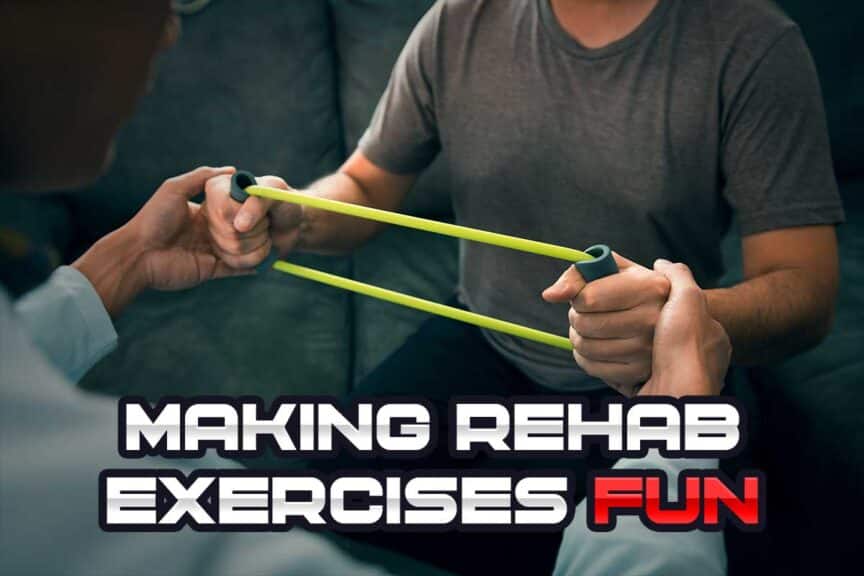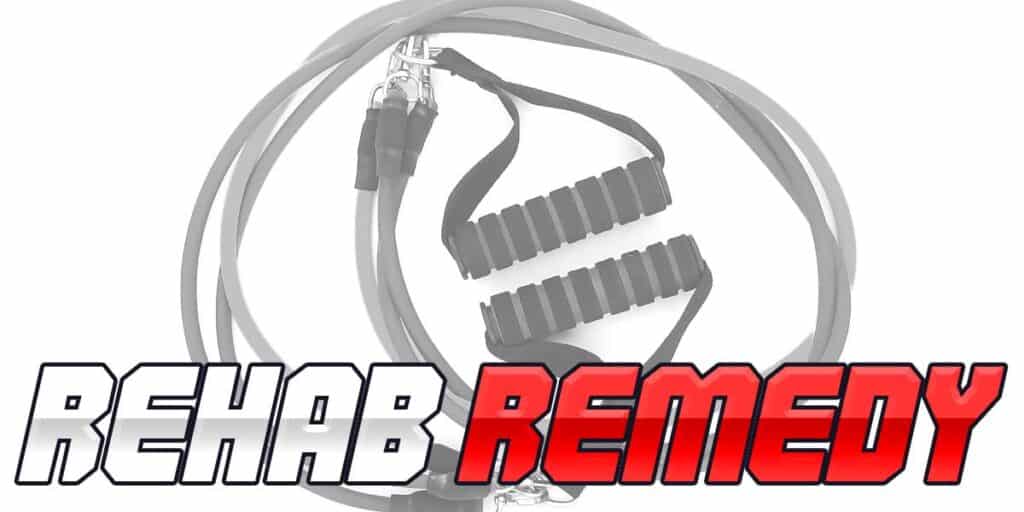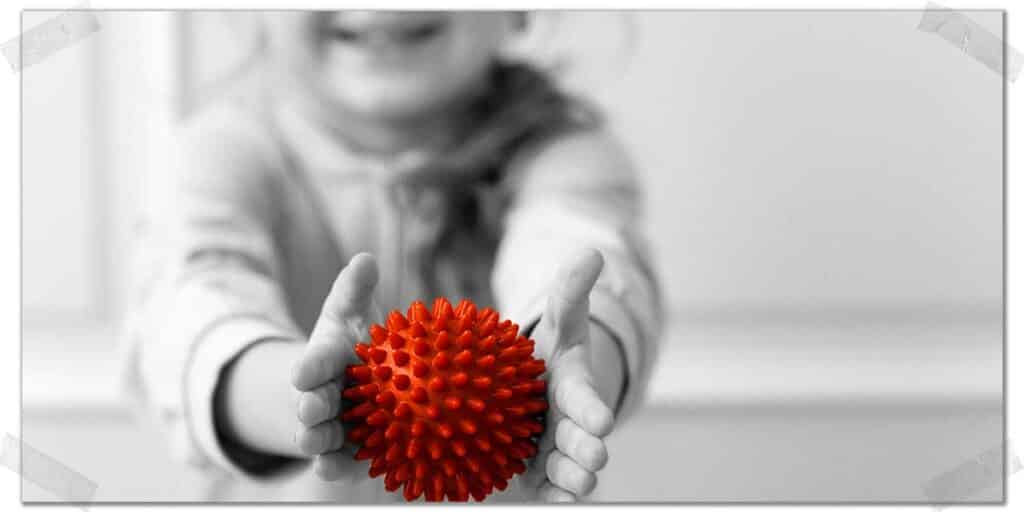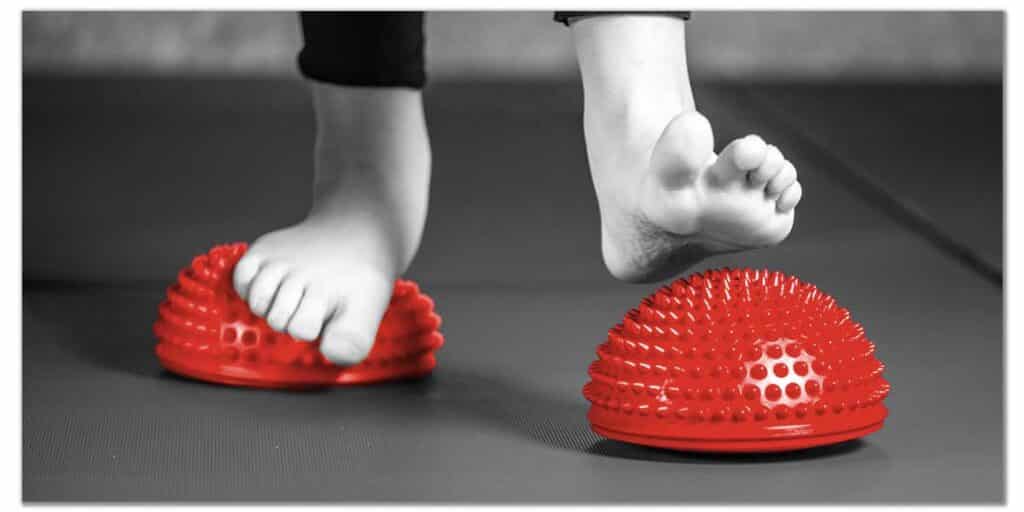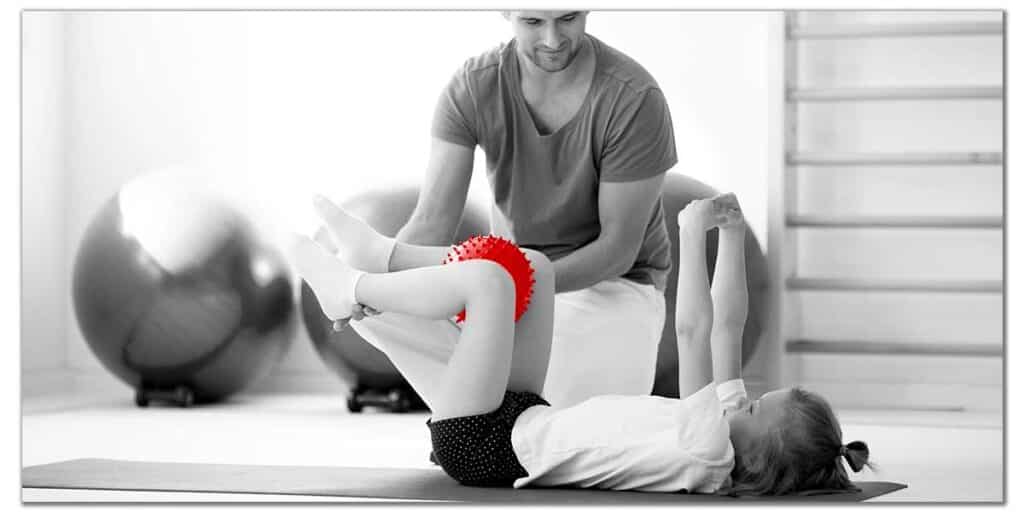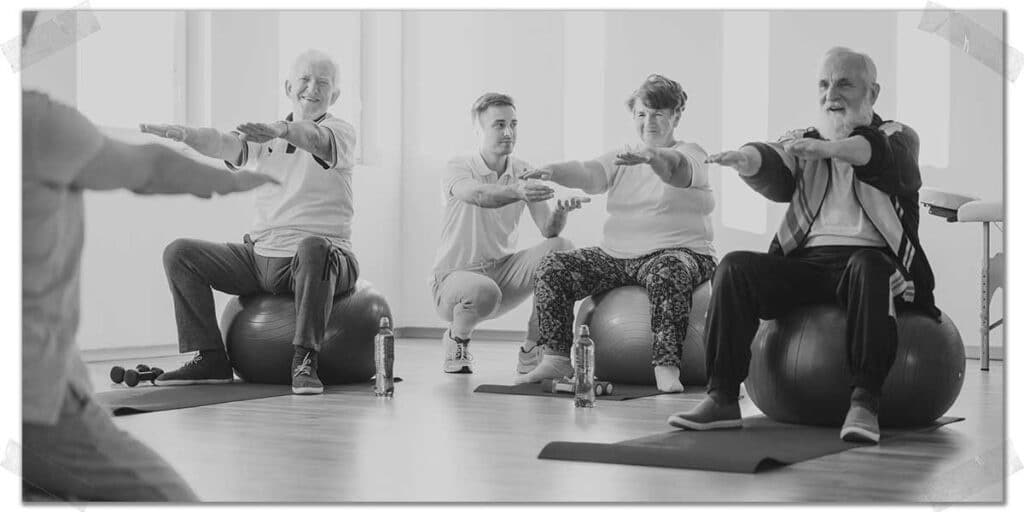For most people, going to physical therapy or performing physical therapy exercises is about as fun as going to the dentist. No, I don’t get upset or frustrated when I hear patients don’t want to go to physio or perform their home exercises (trust me, I get it).
So, there’s no judgment here—only a list of validated ideas and strategies you and your loved ones can consider implementing to make the most out of the physical therapy experience and, hopefully, to get the most out of the experience as well!
Making physical therapy fun for kids, teens, and adults can be achieved through various strategies specific to the individual’s age and needs. Collectively, they work to increase consistency, meaning, and enjoyment for better therapeutic outcomes.
So, what are these various strategies? Well, I’ll be unpacking each one and explaining how and why they can be so powerful for increasing enjoyment for taking the boredom or lack of enjoyment out of one’s physical therapy regimen.
So, let’s get to it!
As we kick things off here, keep in mind that the best strategies to use are those that work best for your needs and abilities or for those of your loved ones (if you’re trying to increase enjoyment on their behalf). Take what works for you (or them) and simply leave the rest!
Remember: the more fun an individual has when performing a task (such as a physical therapy home exercise program), the greater the consistency (and overall progress) they will experience. So, do your best to make things as fun as possible!
Related Content:
A small request: If you find this article to be helpful, or you appreciate any of the content on my site, please consider sharing it on social media and with your friends to help spread the word—it’s truly appreciated!
For the kids: Making physical therapy truly enjoyable
Children (just like teens, adults, and seniors) require physical therapy for all sorts of reasons; they may need to improve their gross motor skills, fine motor skills, balance, coordination, strength, and so on.
The strategies below can be implemented regardless of why the child may require physical therapy or therapeutic exercises; there’s little use for me to write about ways to make physical therapy fun if it only applies to a very small percentage of children/readers of this article.
So, these strategies can be applied across the spectrum of physical rehabilitation, whether it’s to help with developmental delays or difficulties, dealing with muscle spasticity, or recovering from a physical injury (among many other potential scenarios).
Pro tip: You can combine these strategies as needed when helping your kiddo(s) get enjoyment out of the process.
Use toys when possible
Whether it’s a stuffed animal, a toy car, an action figure, or even the child’s favorite blanket, incorporating a meaningful personal object into any exercises or activities can make a big difference for a kiddo doing their therapy. How it’s incorporated can be nearly infinite and will likely be as unique to the situation and therapeutic task as the kiddo themselves.
Simple examples might be:
- Having the child walk an imaginary balance beam (for balance work) to get to Mr. Teddy bear on the other side.
- Picking up coins or other small objects and giving them to their favorite doll or action figure for a task working on fine motor skills with their hands.
- Letting the child have their favorite toy or object by their side when performing their exercises.
Don’t be afraid to get creative here! Using your imagination to come up with ways to work toys and meaningful objects into a child’s physical therapy can significantly enhance the child’s motivation and enjoyment of their exercises!
Let them have a choice in their activities
I remember learning about this psychological phenomenon in a sports psychology class years ago during my undergraduate degree—it’s really cool. When it comes to performing tasks, it turns out that individuals (kids included) are more likely to engage with (and give better effort) when they feel they have a say in the activity that needs to be performed. Giving them a say in the matter goes a long way in their willingness to not only participate but to enjoy the process as well.
It’s a commonly utilized tactic for children partaking in sports-based activities, and it can absolutely be used for physical therapy activities as well. After all, both sports and physical therapy are about moving the body!
Here are some simple examples of what it could look like:
- Letting the child pick from three different balance exercises or activities that all work to produce the same therapeutic outcome.
- Letting the child pick which color bean bag or ball they’d like to play with for their exercise (such as for a task involving catching or throwing an object to improve motor skills).
- Letting the child dress up as their favorite superhero or princess before performing their physical therapy routine (if the child is already familiar with their therapy exercises, you could even ask the child to show you how the superhero, princess, etc., would perform the exercise).
Perform their exercises in a fun environment
It may not always be possible or practical, but performing a child’s physical therapy exercises in an environment or location they enjoy can assist with the child’s overall enjoyment of the physical therapy process (which increases compliance).
Even if it’s something as simple as performing their physical therapy within their favorite room in the house (such as their own bedroom), it can make the overall process more enjoyable for the child.
Don’t discount the environment the child’s therapy takes place within! It really can assist with the child’s willingness to perform and complete their physical therapy exercises!
Pro tip: You can even have the child use their imagination and pretend they’re performing therapy in their superhero’s headquarters, castle, etc. Involving the child’s imagination as much as you can go a long way in helping them to have fun with their physical therapy!
Turn their exercises into a game
Kids need to play, and they don’t do well with approaching exercises with the discipline (or understanding) that adults have.
Whatever the task or objective of their exercise(s) may be, finding a way to turn the task into a game can significantly enhance a child’s attention and motivation. This, in turn, leads to greater enjoyment of the activity.
Pro tip: when it comes to turning tasks into games, encourage the child to use their imagination (use yours as well!) Involving the child’s imagination will go a long way in making physical therapy fun!
When a child experiences enjoyment of an activity, they develop a positive association with that event and are much more likely to want to perform that task (i.e., game) again in the future.
Examples of turning exercises and therapy into a game could look like:
- Taking a walking or balance exercise and pretending to walk a tightrope in the circus—don’t fall off!
- Giving points every time the child successfully completes an exercise task (with a reward given once a set number of points have been attained).
- Have a child throw or toss an object at a target (working on motor skills and coordination) and see who can get it to land closer—you or them! (Kids love it when they have someone they trust to perform an activity with them!)
These may seem like simple examples, but the point is that this strategy can go a long way in helping a child have a fun time with their therapy.
Provide as much variety as possible
They say that variety is the spice of life. That may be true for adults, but for kids, it’s more like oxygen—they absolutely need variety!
Children can lose interest in just about anything rather quickly if they know what’s coming. As such, finding simple, little ways to change up exercises and activities can keep kids engaged as they work on improving their strength, coordination, balance, etc.
Pro tip: Some kiddos, depending on their condition, may favor repetition and familiarity, so be sure to keep this in mind when considering if variety will be beneficial for the child’s physical therapy exercises.
Whether it’s small changes, like using different colored objects, or big changes, such as new activities altogether, variety can help maximize the engagement and enjoyment of a child’s physical therapy experience.
For the teens: Strategies that make a difference
Some readers in this section may be parents or guardians looking for ways to spur a teenager on with their physical therapy. Other readers might actually be teenagers themselves (this is what happens when a global audience can access your blog).
Regardless of which category of reader you fall into, I have often found the following strategies to be helpful, both when performing my therapeutic exercises when I was a teenager and when now treating and helping teenagers as a practicing physical therapist.
Getting creative with social media
Teens and social media go together like peanut butter and jelly – and there’s no need to fight this. The creativity that today’s teens have when it comes to making Instagram reels, TikTok videos, YouTube videos, and other social media content is absolutely astounding.
Getting creative and finding ways to make content documenting the teen’s physical therapy process, such as by creating funny, viral videos and other content, could be an outstanding way to uncover something fun and meaningful about the physical rehabilitation process.
Examples of making physical therapy content could include:
- Videos or reels that discuss the challenges of injury and rehabilitation
- Content that shows others how to make physical therapy more enjoyable
- The best and worst parts about going through physical therapy, presented in a humorous or comedic manner.
Who knows, maybe a video or piece of content will go viral or, at least, lead to new exposure and a massive increase in account followers.
Select an optimal exercise challenge using the 50/50 rule
There’s a very interesting phenomenon that occurs in humans when they have a 50/50 chance of succeeding at a challenge—they give their best efforts possible. It’s quite fascinating, actually.
However, it makes perfect sense: no one is going to give their best effort if they know they have next to no chance at succeeding, nor will they if the challenge takes minimal to no effort to succeed.
Pro tip: this strategy can work well on kids and adults; it’s not just for teenagers!
A simple example:
During ankle rehabilitation, improving the ankle’s strength and the ability to balance on the foot are common tasks that need to be performed.
Selecting balance exercises (with the help of the physical therapist) that see the individual “fail” the task (i.e., they have to put their other foot down on the floor to regain balance) half of the time while successfully completing the other half of their repetitions without losing their balance can optimize effort and enjoyment.
There’s something about a 50/50 chance of succeeding that the brain finds highly enticing or entertaining. So, try setting up any exercises or activities that give you or the individual a 50% chance of successful completion!
Related content:
Understanding the big picture
As a teen, it’s easy to become bored with physical therapy, home exercises, and the seemingly repetitive process of performing the routine multiple times per week.
For these situations, I’ve often found it helpful to keep the big picture in mind: what’s waiting on the other side of this process?
Is it to be able to partake in social activities and leisure with friends again? Is it to get back into a sport faster?
While looking at the big picture might not necessarily make the physical therapy process more enjoyable, it will make it more meaningful.
And as you’ll learn in the following section, when things are meaningful to us, we’re much more likely to stick with the process and see it through to the other side.
For adults: Find meaning and connection
As adults, what works for kids might not work for us (but for many people, it still can). We might not be as imaginative or play with toys anymore, but there are still plenty of strategies that can be used to make physical therapy more enjoyable for adults.
Again, these strategies may not make the therapy process more “fun” per se, but they can certainly make it more enjoyable or tolerable.
Make exercises meaningful and connect with others
As with some of the other tips and strategies within this article, this particular strategy isn’t confined to the adult population alone, but it does work exceptionally well for this demographic.
Pretty much every adult has hobbies or activities that they enjoy. Finding ways to modify exercises so they replicate similar tasks or demands of that activity can be a profoundly helpful strategy for making physical therapy more tolerable.
This may require help from your physical therapist or another qualified healthcare practitioner, so get their assistance if need be.
While there are an infinite number of scenarios for what this could look like, some common examples could include:
- Taking a standard strengthening exercise and finding a way to incorporate it into a movement pattern they do for one of their hobbies.
- Getting a friend involved. It may seem far-fetched, but having a friend around who could socialize with you during your exercises could serve as a great “distraction” from the otherwise non-fun task at hand. Need to ride a stationary bike to help improve your knee function? Call and chat with a friend on the phone as you do so.
- Getting plugged in with an online support group. These days it’s easy to find Facebook groups, subreddits, etc., filled with other people going through the same recovery process as you and struggling in the same ways. Online forums and groups could be a great way to connect with similar people and make the overall therapy process more enjoyable.
For the elderly: staying young at heart
When it comes to physical therapy for seniors, it’s often helpful to encourage the “young at heart” approach, meaning it’s worth getting creative, turning tasks into games, and adapting tasks to the functional needs and abilities of the individual.
This can sound like a bit of a rehash from previous sections within this article, but there are some critical distinctions to make when working with seniors and the elderly.
For starters, seniors may have mobility or cognitive issues that significantly limit the complexity of exercises or tasks (though this can be the case with other populations as well). As such, modifying physical therapy to keep all parameters simple for the individual will almost certainly increase the tolerance or enjoyment of the senior.
Additionally, helping the senior find meaning in their therapy will go a long way in increasing compliance (and hopefully any fun as well).
In my time working with seniors, I’ve often had the most success by being creative with using any equipment or objects that can be used for the senior’s therapy. Sometimes it’s turning exercises into a game and using equipment as an implement to play the game.
Other times, it’s simply getting to connect with the senior a bit more, which helps me to learn more about what they like and don’t like, at which point I can try and weave any relevant findings into their therapeutic exercises.
Remember: when it comes to making physical therapy more enjoyable, it helps to remember that the application of physical therapy is often just as much of an art as it is a science.
Final thoughts
It’s ok if you or a loved one doesn’t find physical therapy to be an experience they look forward to—that’s the case with a lot of individuals. Thankfully, there’s no rule stating you can’t look to have a little more fun along the way.
For many individuals, finding ways to make therapeutic exercises more enjoyable can lead to significantly better physical outcomes.
So, take any of the strategies mentioned within this article and use them with yourself or with your loved ones, tweaking and individualizing them as needed to help make the physical therapy process as fun and as enjoyable as possible!
Frequently asked questions
I’ve included a few answers below to some frequently asked questions. I hope they help you out!

Hi! I’m Jim Wittstrom, PT, DPT, CSCS, Pn1.
I am a physical therapist who is passionate about all things pertaining to strength & conditioning, human movement, injury prevention and rehabilitation. I created StrengthResurgence.com in order to help others become stronger and healthier. I also love helping aspiring students and therapists fulfill their dreams of becoming successful in school and within their clinical PT practice. Thanks for checking out my site!

